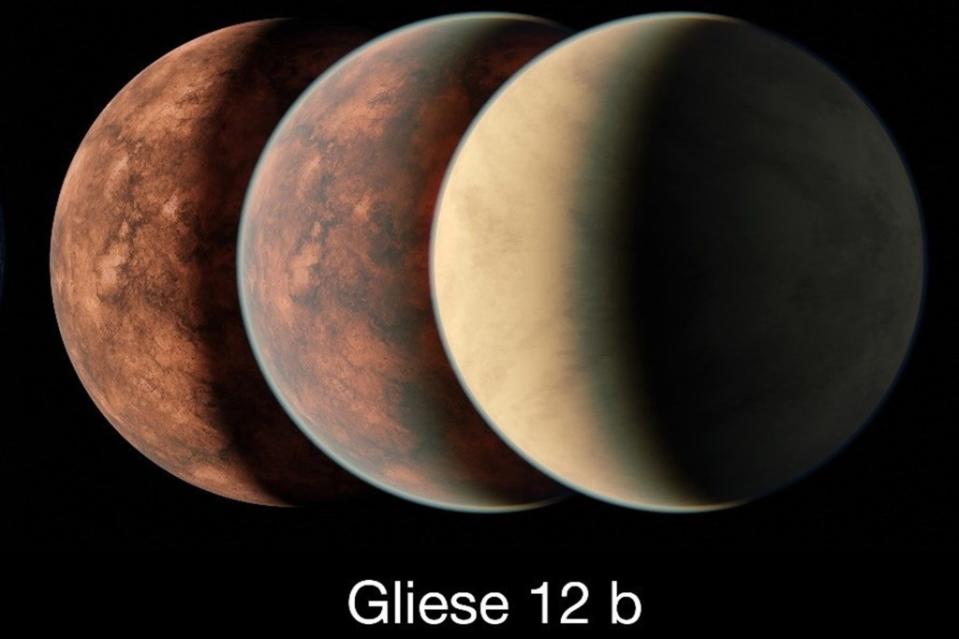Another planet discovered that may support human life — and it’s not that far away

Move over, Mars.
We could be one step closer to becoming a multi-planetary species. Scientists have discovered another planet that has the potential to support human life, per a study outlined in Monthly Notices of the Royal Astronomical Society.
Dubbed Gliese 12 b, the potential intergalactic oasis boasts an average estimated surface temperature of 107 degrees F, just 50 degrees warmer than Earth’s. That’s the lowest estimated temperature out of the approximately 5,000 exoplanets — planets outside of our solar system — that have been discovered to date.
Discovered by an international team of scientists using NASA’s Transiting Exoplanet Survey Satellite (TESS), it is only slightly smaller than Earth and is located just 40 light years away.

Gliese 12 b is one of “a handful of temperate planets similar to Earth that are both close enough to us and meet other criteria needed for this kind of study,” said Michael McElwain, a research astrophysicist at NASA’s Goddard Space Flight Center who co-authored the study, Phys.org reported.
The discovery makes Gliese 12 b the “nearest, transiting, temperate, Earth-size world located to date,” per the scientists, who see it as a potential candidate for further examination by the James Webb Space Telescope.
Transiting occurs when a planet passes in front of its star from our perspective, causing the host star’s brightness to fade. During a transit, some of the star’s light is absorbed by the exoplanet’s atmosphere, emitting a chemical signature that can be picked by telescopes like Webb, which is how most exoplanets are discovered.
To determine if Gliese 12 b is habitable, researchers will need to find out if it has an Earth-like atmosphere, which could allow it to harbor water on its surface — the key ingredient to life.
“Atmospheres trap heat and — depending on the type — can change the actual surface temperature substantially,” described Shishir Dholakia, a doctoral student at the Center for Astrophysics at the University of Southern Queensland in Australia who helped helm the research.

He explained that the temperature estimate is the planet’s “equilibrium temperature” — what Gliese would have without an atmosphere.
The team compared the planet to the similarly-sized Venus, which doesn’t have an atmosphere to shield itself from the sun’s rays, hence why its median surface temp is a scorching 867° F.
“The Earth is habitable, but Venus is not due to its complete loss of water,” explained Larissa Palethorpe, a doctoral student at the University of Edinburgh and University College London.
Fortunately, the study suggests that Gliese could be slightly more hospitable.
The distance between Gliese 12 b and its red dwarf star is just 7% of the distance between Earth and the sun, meaning it receives 1.6 times more energy from its star than Earth does from the sun and about 85% of what Venus receives.
“Since Gliese 12 b gets in between the amount of light as Earth and Venus get from the sun, it will be valuable for bridging the gap between these two planets in our solar system,” said Dholakia.
The planet’s atmospheric retainability will also be impacted by the storminess of its star.
Fortunately, while red dwarfs tend to emit powerful solar flares, scientific analyses reveal that Gliese’s energy source is not so tempestuous — meaning that the planet’s atmosphere could very well be intact.
“Gliese 12 b represents one of the best targets to study whether Earth-size planets orbiting cool stars can retain their atmospheres, a crucial step to advance our understanding of habitability on planets across our galaxy,” said Dholakia.
Scientists need to discover more potentially habitable space rocks in the future to “better understand the diversity of atmospheres and evolutionary outcomes for these planets,” per McElwain.

